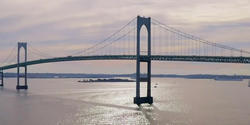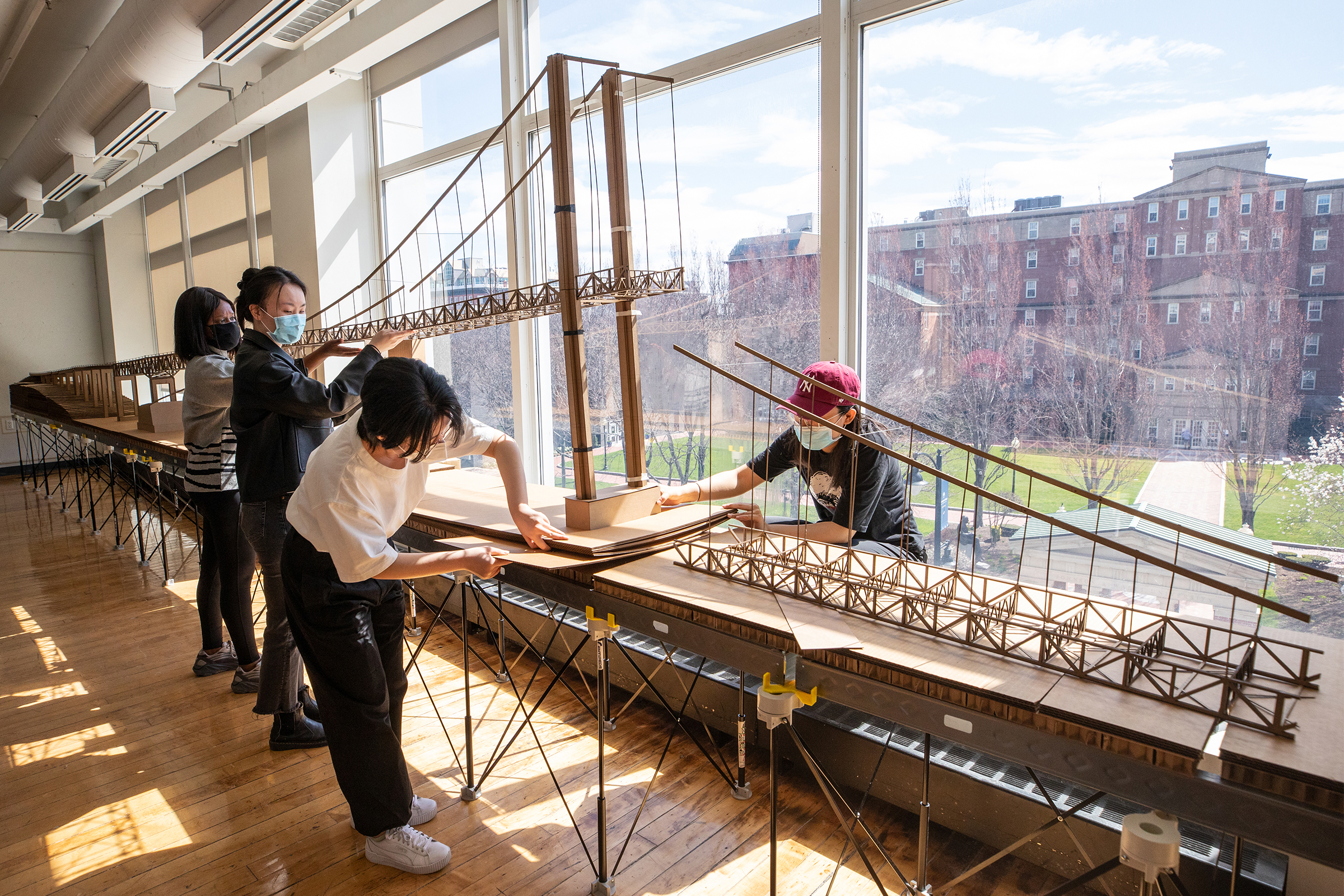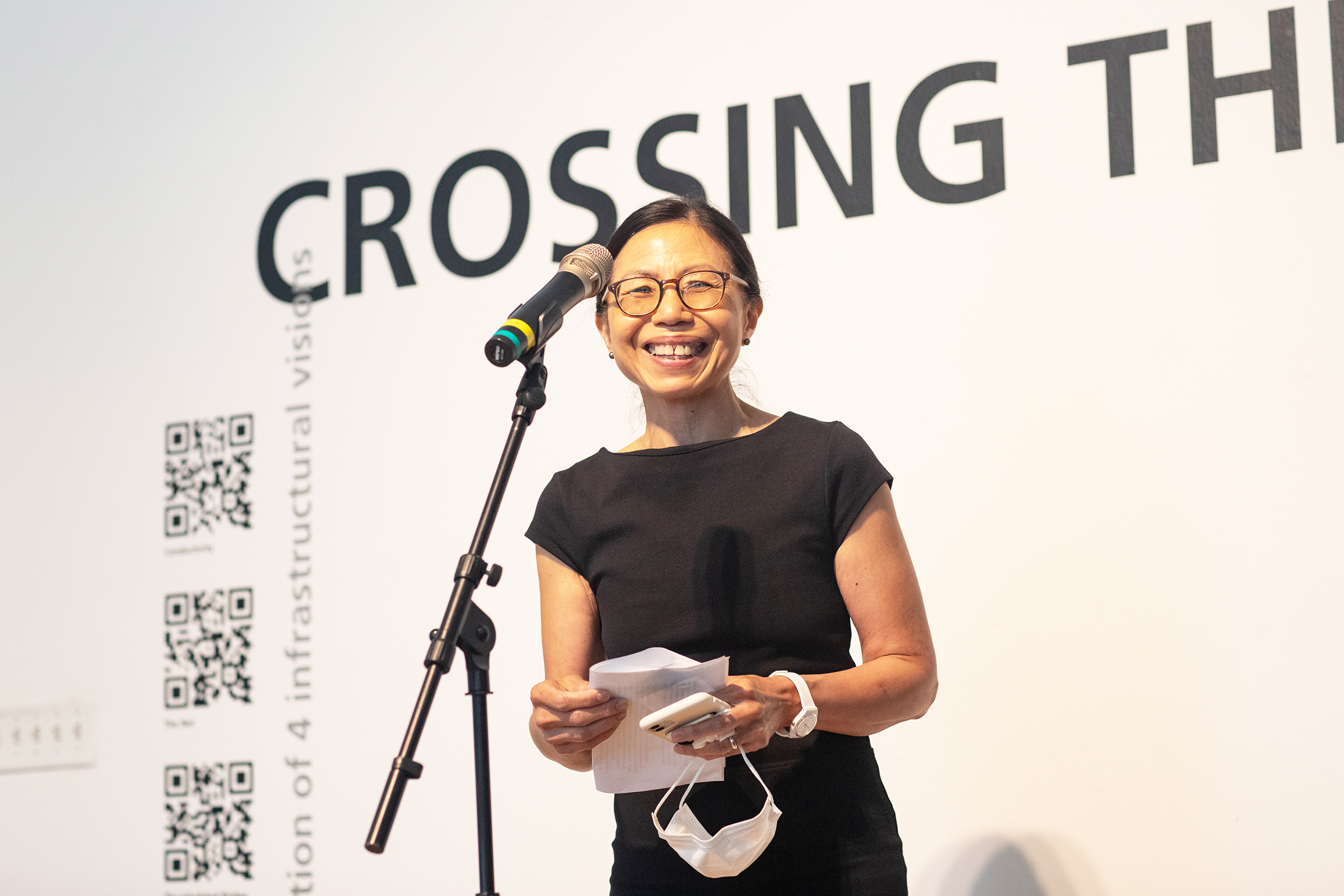An interactive on-campus exhibition brings to life the civil rights movement and ongoing struggle against racism and segregation in the US.
Crossing the Pell

When the state of Rhode Island completed the iconic Newport Bridge in 1969, the massive steel-framed suspension bridge connecting Jamestown and Newport stood as a testament to economic and technological progress. Measuring 2.1 miles across (about the length of Central Park in NYC) and rising to a peak that stands 400 feet off the water in order to allow Navy aircraft carriers to pass underneath the roadbed below, the bridge offers motorists spectacular views of Narragansett Bay.

In 2019, when the state celebrated the 50th anniversary of the structure (which was renamed the Claiborne Pell Bridge after the longtime US senator), Senator Sheldon Whitehouse and other forward-thinking government leaders wondered if there was a way to make the bridge accessible to pedestrians and cyclists. They also hoped to reroute access on the Newport side, where the on-ramp now divides the economically disadvantaged North End from the more affluent areas of the city.
Professor Liliane Wong, who heads up RISD’s Interior Architecture department, posed the design challenge to graduate students in a spring studio focused on adaptive reuse. “Proposing change to an icon like the Pell Bridge is difficult,” Wong notes. “Our goal was to help acclimate the public to something new using virtual reality to create an immersive 3D experience.”

Eight graduate students in Interior Architecture and Landscape Architecture—Shuyi Guan MLA 22, Nupoor Maduskar MA 21, Saira Margarita Paz Nepomuceno MA 21, Seung Hwan Oh MLA 22, Demi Okunfulure MA 21, Sofia Paez MA 21, Mohan Wang MLA 22 and Yu Xiao MLA 22—formed cross-disciplinary teams of two and developed stunning visions for adding a suspended lower level to the bridge that would allow for pedestrians and cyclists as well as arts venues, parks, cafes and even a floating fish market.
With guidance from Wong and faculty members Michael Grugl, Andrew Hartness and Wolfgang Rudorf, students considered everything from intense wind conditions to expected sea level rise to new, lightweight composite materials in their plans. They studied successful projects launched elsewhere, like the Lightpath in Auckland, New Zealand and Superkilen Park in Copenhagen, Denmark, with an eye toward environmental impact, social equity and feasibility.


Okunfulure and Wang proposed a system that would harness solar and wind energy via photovoltaic and piezoelectric components to power the bridge’s lights as well as 275 homes (see image, above). They describe their methodology as “a holistic approach to the future of bridge design that captures energy through infrastructure.”
Maduskar and Xiao played off the area’s historic fisheries and envisioned a new floating fish market and a series of floating eco-islands along the span that would create new habitats for fishes and spur a new type of fishing tourism. The project pays homage to the state’s fishing economy by incorporating an architectural vocabulary of nets that play with natural elements such as light, wind and gravity.


Nepomuceno and Oh also hope to boost the local economy with their proposal and to embrace tourism with a welcome center, docking points for sailboats and a spectacular outdoor theater on the bridge viewable from a new floating amphitheater. Paez and Guan responded to concerns about high winds with an enclosed 3D-printed structure created from carbon fiber and wrapped with a translucent composite membrane. These groundbreaking construction methods would be safer, quicker and less costly.
“I hope Rhode Islanders will be inspired by these designs as we look to include more innovative elements in future infrastructure projects.”
In late May the class presented their ideas to Whitehouse’s team using cardboard VR viewers and a tour of the site created with Pano software, offering a visceral sense of what it would mean to cross the Pell on foot. “I am completely in awe of the vision and talent of these RISD students,” says Whitehouse. “They reimagined what the Pell Bridge could be. I hope Rhode Islanders will be inspired by these designs as we look to include more innovative elements in future infrastructure projects.”

Funding from the Champlin Foundation allowed the Interior Architecture students to purchase VR/AR headsets, a stationary bike and other equipment needed to create an immersive exhibition presenting the four design schemes at RISD’s Sol Koffler Graduate Student Gallery (on view August 2–6, 1–5 pm). Plans are also in the works for the exhibition to travel to a series of other Rhode Island venues. The goal is to inspire citizens and encourage government leaders to adopt elements of the student designs for implementation.


At the exhibition opening, Interim President Dave Proulx spoke about how the project reflects “the power of RISD partnerships with the community.” And Provost Kent Kleinman described the student work as “a great example of how RISD rethinks and elevates design problems rather than focusing narrowly on providing solutions.”
Wong was on hand to introduce the project to visitors. “Whatever the long-term outcome of their proposals, I couldn’t be more proud of the students in this class,” she says. “As the culminating learning experience in a post-professional program, the studio supports RISD’s commitment to sustainability—a pillar of our strategic plan—and pushed them to consider real-life parameters such as communities divided by economic disparity, the threat of sea level rise and the positive and negative effects of tourism on the city. These are exactly the kinds of issues that successful professionals contend with in practice.”
—Simone Solondz / photos by Jo Sittenfeld MFA 08 PH
For more information, visit crossingthepell.risd.edu.
August 2, 2021


